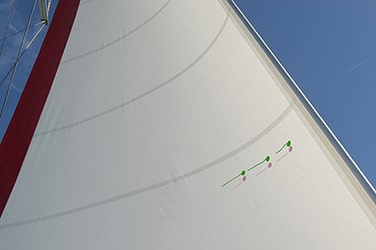When Turbulent Flow Happens in Sailing
An airplane stalls and falls out of the sky when the wings stop producing as much lift as the weight of the plane. Training as a pilot in my earlier days, the instructor would purposefully stall the airplane and then show me how to get out of the stalled and spinning situation by regaining control. He would reduce speed and pull back on the yoke. The wing angle of incidence to the airflow would be too great. The wind across the top of the wing would not be able to make the turn over the wing and it would “detach” creating turbulent flow at the top of the wing. It would thus lose lift and – whoa – sharp dipping spin to the left and down we’d go. To get out, you apply the “opposite rudder” to the spin direction to counteract the spin, push the stick forward to reattach the airflow, and keep the ailerons held steady and horizontal. Then put your eyeballs back in their sockets.
Turbulent flow occurs on top of the wing, the leeward side of the sail, when the wing/sail angle presented to the wind is such that the wind can’t be expected to turn enough to fully wash over the top/back side of the wing/sails. The wind “detaches”. At that point, the lift disappears.




